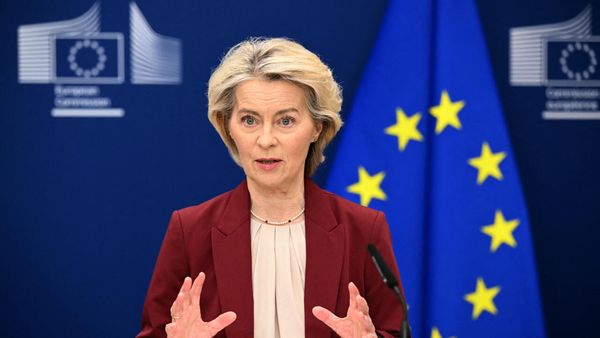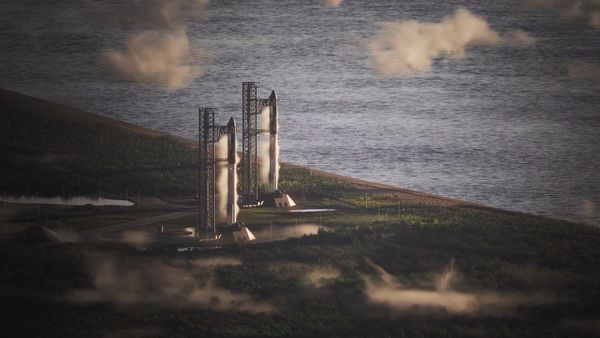Russian drones recently violated Polish and Romanian airspace.
These intrusions, whether intentional or not, caused Poland to shut down airports and both Polish and Romanian officials deployed their air forces. The Polish air force, ultimately, succeeded in downing 19 drones while Romania monitored but did not engage for fear of collateral damage.
The media focus in the aftermath of these incursions is on the political ramifications. Both Poland and Romania are NATO members, and Poland has invoked Article 4 of the NATO treaty. It’s one of only eight times a country has invoked it.
Article 4, the shortest of the NATO treaty’s 14 articles, states that:
“The Parties will consult together whenever, in the opinion of any of them, the territorial integrity, political independence or security of any of the Parties is threatened.”
‘Here we go!’
American President Donald Trump wrote about the incursions on social media: “What’s with Russia violating Poland’s airspace with drones? Here we go!”
This statement stoked hopes among Ukraine’s supporters that Trump would increase either his support for Ukraine or boost sanctions on Russia. Besides stating that he would impose harsh sanctions if NATO countries stop importing Russian oil, Trump has so far done nothing.
The political ramifications are important. Noted war theorist Carl von Clausewitz, after all, defined war as a political act.
What’s missing from recent analyses, however, is how Ukraine’s struggle over the last three years has yielded valuable lessons for Europe’s defence.
An ongoing peace
Polish Prime Minister Donald Tusk, in the aftermath of the intrusion, declared in parliament that “this situation brings us the closest we have been to open conflict since World War Two.” Tusk’s statement highlighted the political significance of Russia’s actions and underscored the seriousness of the incident.
It also highlights how many European countries have had little engagement with direct conflict since the Second World War. There are notable exceptions to this point, specifically for the United Kingdom and France, but for many European countries, their engagement with war has been more theoretical and less practical.
Even in the case of the U.K. and France, military operations they’ve engaged in are not similar to those Ukraine faces against Russia. France and Britain have fought either insurgency campaigns or in wars against states that lacked their military capabilities, like Iraq.
These actions, while useful from a military standpoint, could be distorting perceptions about their capabilities when it comes to engaging against a competitor with similar military strength.
Fighting the ‘last war’
Militaries face a constant problem in their preparations as they determine what tools will be needed for the next war. This question is complex.
The interaction between new technologies and human beings can create unique dynamics that can alter the balance of warfare. Germany’s ability to combine radio, mobility and mission tactics in the form of the Panzer tank, for example, initially shifted the balance of the Second World War.
Some technologies, however, can end up being a proverbial dead end and cost a state significantly for no appreciable gain. Admiral John Fisher, the First Sea Lord of the British Royal Navy at the start of the 20th century, believed a vessel known as the battle cruiser would revolutionize warfare. Battle cruisers were ships with the weapons of a battleship and the armour and speed of a cruiser.
The concept of the battle cruiser, one that would outrun a battleship and destroy any lesser ship, was sound. Human nature and a lack of creativity, however, meant that British admirals frequently used them against battleships. Deploying battle cruisers against targets they were not designed to fight ended in tragedy.
The result of such deployments was disaster at the Battle of Jutland off the coast of Denmark in the First World War, and further calamity when the German battleship Bismarck sank the British battle cruiser HMS Hood during the Second World War.
In other words, armed forces can spend large sums of money on technological innovations and end up with no appreciable gain. In fact, a country can place itself at a distinct disadvantage if it invests incorrectly.

Finding the right tools and practices
Russia’s incursion into Polish and Romanian airspace has the potential to expose the vulnerability of both countries, and more broadly NATO as well. Although Poland succeeded in eliminating the drones, it needed to employ aircraft to do so. Ukraine’s experience demonstrates there are much cheaper and more efficient ways of eliminating enemy drones than employing expensive aircraft.
Ukraine continues to develop a multi-layered air defence system to protect its soldiers and civilians from Russia’s nightly drone bombardment.
These methods range from interceptor drones to electronic warfare jammers.
In the aftermath of Russia’s incursion into Poland, in fact, European nations are looking for guidance from Ukraine on practices and technology to combat drone attacks.
Dealing with drones in contemporary warfare is just one facet of what observers can learn from the enduring war in Ukraine. But there are other lessons that could have an even greater impact on what European countries should consider in their defence policies.
Learning from Ukraine
First among them is the importance of mass armies. Western military doctrine seeks to overcome the question of mass through technological innovations that promote manoeuvre on the battlefield to overcome larger armies.
But unfortunately, technological innovations in the war in Ukraine — whether they’ve involved drones or advanced sensors — have reinforced attrition versus the manoeuvre tactics favoured by western countries. In such a war the size of one’s army, and its capacity to produce munitions, are of paramount importance.
Second, the western experience of peace has distorted collective perceptions of war. Ukraine has shown us that disinformation campaigns, often considered a form of warfare by the West, are simply not on par with the destruction and harm a conventional war inflicts on people.
Western countries have spent too much energy preparing for disinformation campaigns and other forms of hybrid warfare versus the traditional-style war Ukraine faces against Russia.
Read more: Russian propaganda is making inroads with right-wing Canadians
This distortion has contributed to the West’s slow response time in Ukraine. European states, three years after the current phase of the conflict, are still coming up short. Armaments production in the European Union is not sufficient to support Ukraine, let alone the continent’s needs.
Throughout its war with Russia, Ukraine is providing a formula: large armies and certain new technologies are what European and other states require for a contemporary war. The question remains, however, if these states will heed these lessons.
The authors do not work for, consult, own shares in or receive funding from any company or organisation that would benefit from this article, and have disclosed no relevant affiliations beyond their academic appointment.
This article was originally published on The Conversation. Read the original article.







